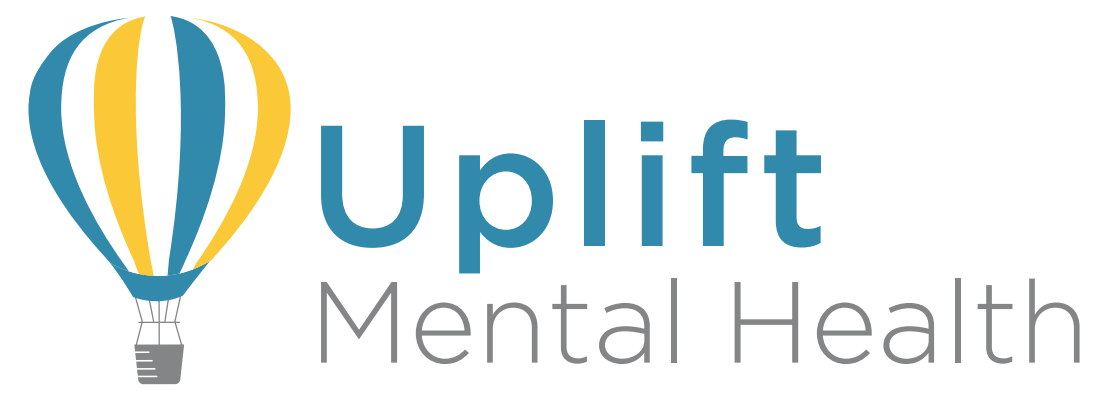To listen to the podcast click here
The Covid pandemic has been the biggest source of change this century. At first, the disruption to daily life, working practices and social norms brought about some strong resistance from our part. However, over time we have learned to adjust to our ‘new normal’. Now, we wouldn’t dare to leave the house without our face mask and hand sanitizer.
I started wondering, how does ‘normalisation’ happen? How do people come to see something radically new as acceptable or expected? And, can we use this information to normalise mental health conversations at work?
My research led me to a study which revealed that normality results from 2 things:
1) perceiving something as statistically common (e.g. frequently observing it)
and 2) believing something to be morally ideal.
In the case of Covid, the commonality of new behaviours such as mask wearing and self-isolation, coupled with the moral belief that these behaviours were “necessary for the safety of the population” enabled them to be adopted quickly.
The same has been happening with mental health discussions at work -albeit more slowly and over a longer period of time. According to Business in the Community’s (BITC) 2020 mental health report, an increasing number of organisations are prioritising mental health initiatives at work -especially since the pandemic.
Obstacles to Normalising Mental Health Conversations
Although there is now a much wider acknowledgement of mental ill health than previously before, stigma continues to be an obstacle for many suffering with mental health problems at work. The BITC report also stated that the number of employees not disclosing acute mental health issues had risen from 27% in 2019 to 30% in 2020.
This may not sound like much, however, when you consider that an estimated 10 million people (that’s 20% of the population) will need either new or additional mental health support in the coming year as a result of the pandemic (see Centre for Mental Health), you can see the enormity of the problem. Many employees will struggle to access therapeutic support via the NHS and IAPT services due to the spike in demand and long waiting lists.
What happens if members of your organisation are not able to get the help they need? How could you support them if they aren’t comfortable talking to you or if you don’t have the means in place for them to get private and confidential help?
Another hurdle is the lack of Line Manager mental health training and support. I have had countless Wellness Chats this last year with managers that reported that they felt ‘unsure’ of how to best support colleagues emotionally. Many others also said they felt ‘uncomfortable’ with the greater emphasis on the psychological health of their teams. A few admitted to “feeling out of their depth”.
This was echoed by some employees who felt their managers were lacking in empathy and flexibility -two big causes of workplace stress. Some employees also told me that they felt their manager prioritised targets and objectives over the wellbeing of their team. Employees who don’t feel valued or understood disengage from their work. This can lead to a loss of productivity, increased sickness absence, leavism and higher attrition rates.
My experience is supported by the Mental Health at Work 2018 Report: Seizing the Momentum, which reports that only 16% of employees felt comfortable reporting a mental health issue to their line manager. This was due to: 1) of fear of ‘making it formal’, 2) worries about the ‘negative consequences’ and 3) a belief that the ‘right’ support wasn’t available.
Although most managers now accept that their team’s mental health and wellbeing is their responsibility, only 30% receive the training required to enable them to do this effectively. This puts most at a disadvantage because many managers are expected to balance the dual nature of their roles: managing people and managing productivity.
Most managers were tasked with helping their teams adapt to new working environments and practices, continue to focus on performance targets, manage increased workloads as well as ensure their team members’ wellbeing was supported. That is a lot for managers to juggle, it’s no wonder many complained they didn’t have enough time and why many suffered with work-related stress and anxiety!
Unfortunately, there is currently very little mentoring, coaching and/or therapeutic support in place for managers at this time. This is something that needs to be addressed going forward, otherwise we will face the collapse of middle management which could have devastating ramifications for businesses.
3 Steps to Normalise Mental Health Conversations at Work
Step 1: Focus on Psychological Safety
The way to elevate mental health to the level of physical health & safety normalcy is to embed it into your company’s culture. This means that you consciously create and/or monitor your work environment to ensure that psychological safety is continuously prioritised.
What is psychological safety?
You may have heard this term before. It was developed by Amy Edmundson, Professor of Leadership and Management at the Harvard Business School. It refers to developing an environment of ‘fearlessness’ that encourages greater creativity, inclusion, cooperation and collaboration at work. An atmosphere of unconditional acceptance, understanding and support breeds employees that feel safe and valued and fosterssatisfying work-place relationships.
You may be thinking that this sounds very idealistic and impractical -especially if you come from a sector that is known for being high-pressured and highly competitive. However, it is this profit-focused paradigm that is the cause of most work-place mental health problems.
An organisation that promotes an internally competitive work environment is unknowingly contributing to poor mental health. The reason for this is that success-driven cultures attract and recruit “high achievers” who are generally highly dedicated and productive. However, most of these individuals place enormous pressure on themselves to impress their business leaders, to make an ‘impact’ and to “be the best”. More significantly is the fact that they are driven by fear of failure and letting others down. As a result, many of them suffer from chronic stress and anxiety issues such as perfectionism, imposter syndrome, OCD as well as sleep irregularities, digestive issues and musculoskeletal problems.
The problem is that many companies see self-sacrificial behaviour as honourable and loyal. This is due to a cultural belief that values professional success above health. This needs to change.
It is crucial that employers recognise that it is their legal Duty of Care to ensure that all individuals are supported to work and achieve in a healthy and balanced way.
All organisation, regardless of their sector will benefit from creating a psychologically safe work environment. The Covid pandemic has helped many companies focus on people first, profits second. Now is the time to facilitate a paradigm shift that will foster trust and encourage employees to openly talk about their mental health.
My top tips here are to ensure your organisational values, vision and attitudes accurately reflect your emphasis on good mental health and wellbeing. Remember, this is most clearly demonstrated by your choices and actions (e.g. mental health initiatives, line manager training and support, recruitment and retention processes, etc.), so be congruent. Ensure that your words and actions are aligned.
Step 2: Emphasise Wellness
Although raising awareness of mental illness has been needed to reduce the ‘judgement’ and stigma associated with having a mental health condition, this singular focus on poor mental health has caused people to associate the term ‘mental health’ with ‘mental illness’ . However, the truth is that mental health is a spectrum, or like MHFA England express it, “a continuum” which fluctuates over time and can change according to treatment or circumstances.
In my professional experience, I have found that changing my focus to mental wellness has greatly enabled me to overcome stigma. People want wellness, not illness. So, focus on what they desire and are comfortable talking about.
This has meant that my language and approach has changed to reflect this emphasis on positive health outcomes. This is why I developed Wellness Chats, a preventative tool that encourages employees to reach out for a chat with a wellbeing counsellor when they feel challenged by a work or personal issue. This way they are addressing problems early on, speaking privately and confidentially to a trained professional able to provide them with guidance or advice that can make an immediate difference.
Over the last 2 years, Wellness Chats have become one of my most popular services. Employees are much more comfortable having a chat about mental wellness than they are going for counselling. As a result, I have found that Wellness chats also serve as a great sign-posting platform. My colleague Mark and I have identified numerous individuals who would benefit from longer-term support such as counselling and have explained the process and provided details on the best routes to access this support (e.g. EAP, IAPT, private counselling routes, etc.). This has meant that individuals who were hesitant were given the reassurance and support they needed to take that important step.
The focus on prevention and wellbeing really does encourage people to get help early to stay well, which for most people is “morally ideal” (remember the factor needed for normality?). The goal is to enable people to manage their own mental health through education and support. It also entails creating responsive wellbeing programmes designed around the changing and unique needs and desires of the employees and organisation.
At Uplift we work closely with HR teams to develop and deliver holistic mental wellbeing programmes that emphasis prevention but also provide intervention and crisis support.
Step 3: Use repetition and constancy to normalise
The key to successfully creating and sustaining a psychologically safe, people-centric work environment is consistency. This means that all business leaders must “believe whole heartedly” in this ethos. They must have the confidence, passion and drive to talk about it consistently and repeatedly. This is the easy part.
The challenging part is helping c-suite, senior and middle managers develop their self-awareness so that they can recognise when there are incongruencies or conflict between what they say and what they do. For example, most business leaders are guilty of preaching about healthy work habits and encouraging wellbeing, but then ignore their own advice. They either pile on the workload, send emails after hours or suppress their own mental health issues out of fear of perceptions. What is the implied message here?
Establishing a healthy work culture requires courageous business leaders to ‘hold the mirror up’. What they observe in themselves and their people is a reflection or symptom of cultural beliefs -both implicit and explicit. If what they see is a healthy, engaged, adaptive and cooperative workforce, then they will know that what they are focusing on is right.


